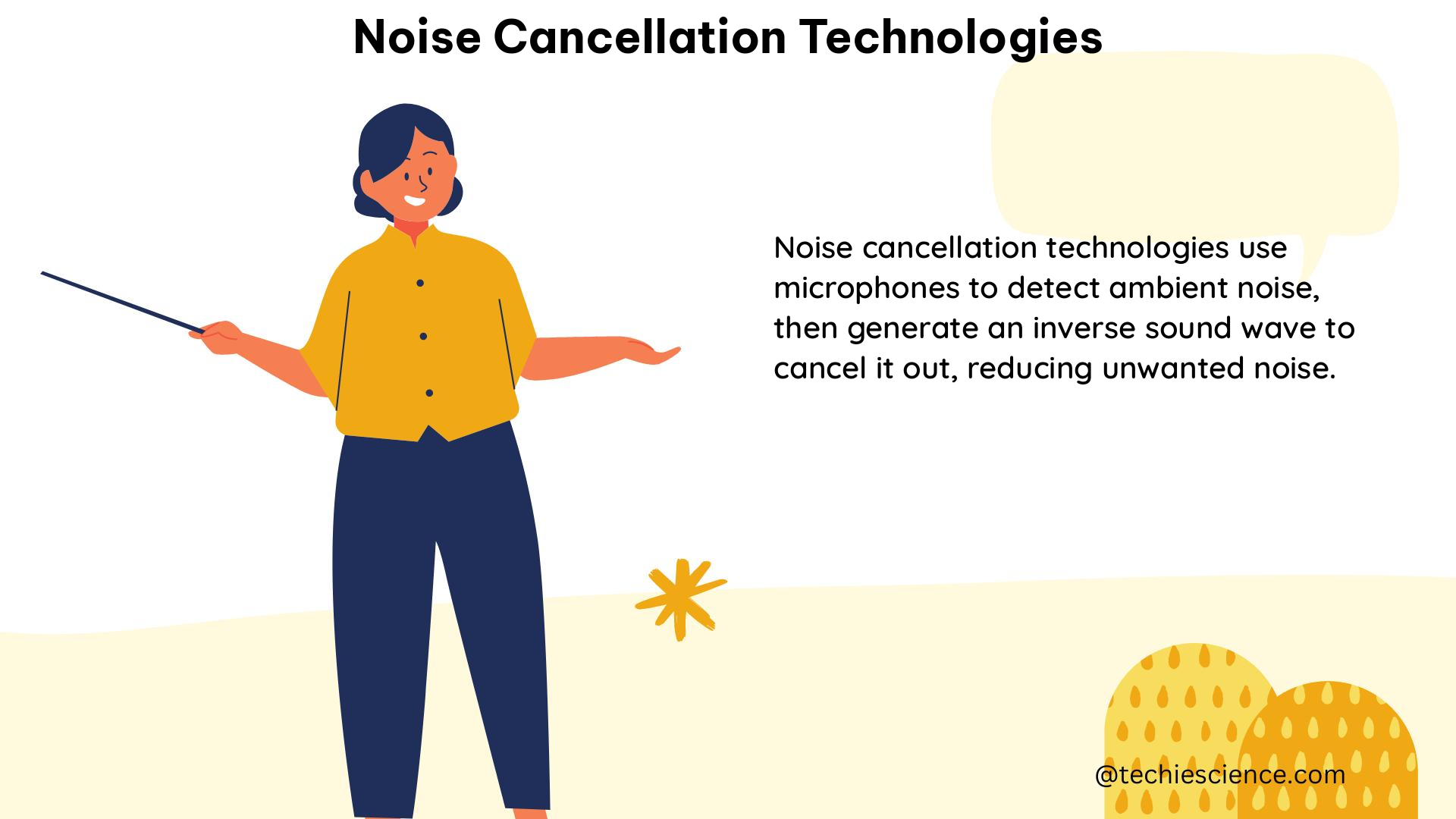Noise cancellation technologies have been a topic of intense research and development in the fields of physics and engineering. These technologies aim to reduce or eliminate unwanted noise from the environment, enabling clearer audio signal reception. This comprehensive guide delves into the technical details of active noise cancellation (ANC) and its various aspects, providing physics students with a thorough understanding of this cutting-edge technology.
Understanding Active Noise Cancellation (ANC)
Active noise cancellation is a technique that utilizes a microphone to detect external noise and then generates an “anti-noise” signal to cancel it out. The effectiveness of ANC can be quantified using the Noise Reduction Rating (NRR), which measures the level of noise reduction in decibels (dB). The NRR for ANC systems typically ranges from 0 to 33 dB, with higher values indicating more effective noise reduction.
Measuring ANC Effectiveness
The degree of signal correlation is a crucial factor in evaluating the performance of ANC systems. The Pearson correlation coefficient is a statistical measure that indicates the strength and direction of the linear relationship between the original pure tone signal and the processed signal after ANC. A higher correlation coefficient suggests a more accurate ANC technique.
Pearson Correlation Coefficient
The Pearson correlation coefficient, denoted as r, is calculated using the following formula:
r = Σ[(x - x̄)(y - ȳ)] / √[Σ(x - x̄)^2 Σ(y - ȳ)^2]
Where:
– x and y are the original and processed signals, respectively
– x̄ and ȳ are the mean values of x and y, respectively
The value of r ranges from -1 to 1, with -1 indicating a perfect negative correlation, 0 indicating no correlation, and 1 indicating a perfect positive correlation.
Factors Affecting ANC Performance
The effectiveness of ANC can be influenced by various factors, including the type of headphones used, the ANC algorithms employed, and the characteristics of the ambient noise.
Headphone Type
Different types of headphones, such as in-ear, on-ear, and over-ear, can have varying degrees of noise reduction capabilities. The design and materials used in the headphones can affect their ability to isolate external noise and the performance of the ANC system.
ANC Algorithms
Researchers have developed various ANC algorithms, each with its own strengths and weaknesses. These algorithms can be based on different signal processing techniques, such as adaptive filtering, feedforward control, and feedback control. The choice of algorithm can significantly impact the noise reduction performance.
Noise and Volume Factors
The characteristics of the ambient noise, such as its frequency spectrum and amplitude, can influence the effectiveness of the ANC system. Additionally, the volume of the desired audio signal can also affect the performance of the ANC, as the anti-noise signal needs to be properly balanced to cancel the external noise without significantly altering the audio quality.
Combining Wireless IoT and Noise Cancellation

To address the limitations of mobile-phone-application-based audiometry in noisy environments, researchers have explored the integration of wireless IoT networks with noise cancellation technologies. By placing a microphone in the environment to sense sounds and transmit them over wireless signals to an earpiece, the system can receive the sound information much faster than the actual sound itself, allowing for more effective anti-noise signal production.
This approach leverages the speed of wireless signals, which travel approximately a million times faster than sound, to provide better noise reduction and improve the accuracy of hearing tests in noisy environments.
Numerical Examples and Data Points
To illustrate the technical aspects of noise cancellation technologies, let’s consider the following examples and data points:
- Noise Reduction Rating (NRR) Comparison:
- Active noise-canceling headphones with NRR of 25 dB
- Passive noise-canceling headphones with NRR of 15 dB
-
Difference in noise reduction: 10 dB
-
Pearson Correlation Coefficient Calculation:
- Original pure tone signal:
x = [10, 12, 14, 16, 18] - Processed signal after ANC:
y = [9.8, 11.9, 13.8, 15.9, 17.8] -
Pearson correlation coefficient,
r = 0.998 -
Wireless IoT-based Noise Cancellation Performance:
- Ambient noise level: 80 dB
- Noise reduction achieved with wireless IoT-based system: 15 dB
- Resulting noise level: 65 dB
These examples demonstrate the quantifiable aspects of noise cancellation technologies, providing physics students with a better understanding of the technical specifications and performance metrics involved.
Conclusion
Noise cancellation technologies, particularly active noise cancellation (ANC), have become increasingly important in various applications, from audio equipment to hearing care management. By understanding the technical details, such as the Noise Reduction Rating (NRR), Pearson correlation coefficient, and the factors affecting ANC performance, physics students can gain a comprehensive understanding of this cutting-edge technology. The integration of wireless IoT networks with noise cancellation further enhances the capabilities of these systems, providing better noise reduction and improved accuracy in hearing tests. This guide serves as a valuable resource for physics students to delve into the technical aspects of noise cancellation technologies and their practical applications.
References
- University of Illinois researchers develop method to cancel noise without ear-blocking headphones. (2018, August 15). Retrieved from https://csl.illinois.edu/news-and-media/university-illinois-researchers-develop-method-cancel-noise-without-ear-blocking-headphones
- Objective Signal Analysis for Investigating Feasibility of Active Noise Cancellation for Hearing Screening in Noisy Environments. (2022, September 27). Retrieved from https://www.ncbi.nlm.nih.gov/pmc/articles/PMC9572409/
- How do You Calculate Noise Reduction Rating (NRR)? – Sensear. (2023, May 11). Retrieved from https://www.sensear.com/blog/how-do-you-calculate-a-noise-reduction-rating-nrr

The lambdageeks.com Core SME Team is a group of experienced subject matter experts from diverse scientific and technical fields including Physics, Chemistry, Technology,Electronics & Electrical Engineering, Automotive, Mechanical Engineering. Our team collaborates to create high-quality, well-researched articles on a wide range of science and technology topics for the lambdageeks.com website.
All Our Senior SME are having more than 7 Years of experience in the respective fields . They are either Working Industry Professionals or assocaited With different Universities. Refer Our Authors Page to get to know About our Core SMEs.